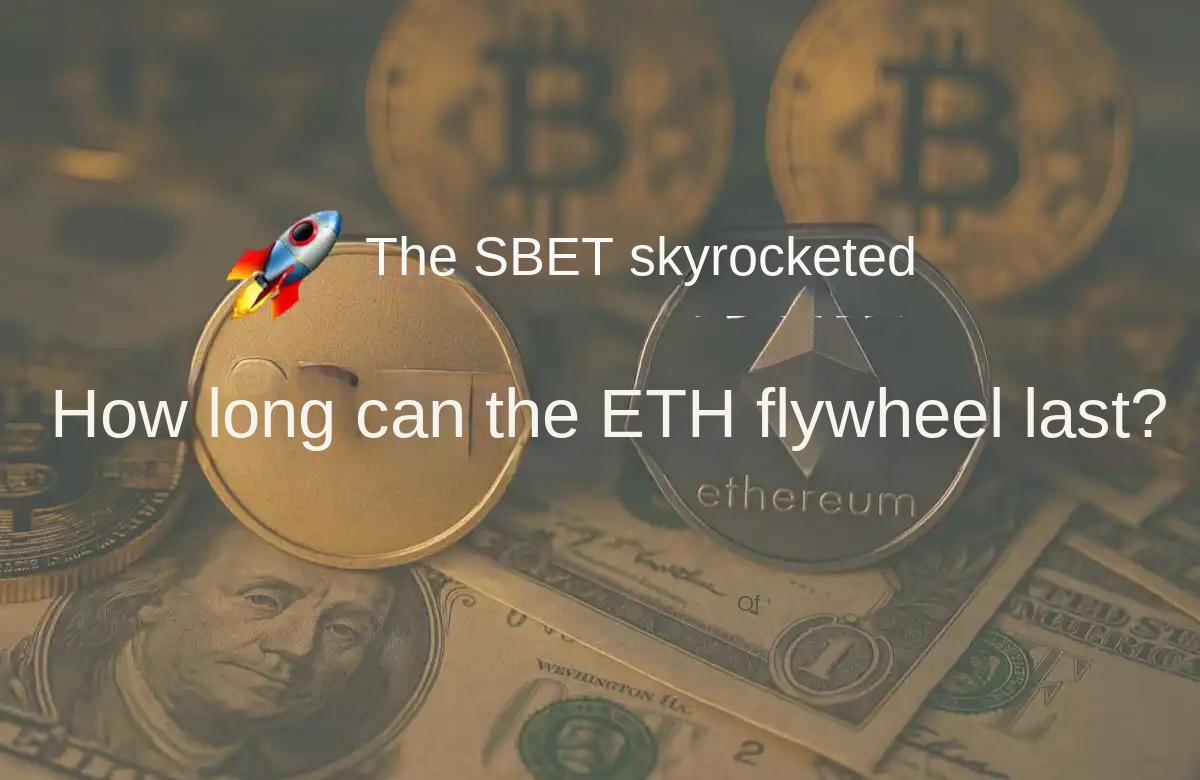Ethereum at $3600: An Invisible Settlement Game
Original Article Title: The Hidden Mechanics Behind Ethereum's Rally: Understanding Market Structure and Systemic Risk
Original Source: A1 Research
Original Article Translation: Tim, PANews
Ethereum's price fluctuation may seem simple: retail FOMO drives the price up, market sentiment turns bullish, and the optimism continues to escalate. However, beneath the surface lies a structurally complex market mechanism. The interplay of the funding rate market, hedging operations by neutral strategic institutions, and recursive leverage demand has exposed a profound systemic fragility in the current crypto market.
We are witnessing a rare phenomenon: leverage has essentially transformed into liquidity itself. The massive influx of long positions initiated by retail investors is fundamentally reshaping the risk-neutral capital allocation, giving rise to a new form of market vulnerability that most market participants have not fully recognized.
1. Retail FOMO Long Phenomenon: When Market Behavior Reaches a Peak Synchronicity
Retail demand is concentrated in Ethereum perpetual contracts, as these leveraged products are easy to access. Traders are pouring into leveraged long positions at a pace far exceeding the actual spot demand. The number of people looking to bet on ETH's rise far surpasses those actually buying Ethereum in the spot market.
These positions require counterparties to take the other side. However, as buying demand becomes excessively aggressive, the short side is increasingly absorbed by institutional players executing Delta-neutral strategies. These are not directional bears but rather funding rate harvesters, intervening not to bet against ETH but to exploit structural imbalances for arbitrage.
In fact, this practice is not shorting in the traditional sense. These traders hold an equal amount of spot or futures long positions while being short in perpetual contracts. While they do not bear the risk of ETH price, they earn profits through the funding rate premium paid by retail longs to maintain their leveraged positions.
With the evolution of the Ethereum ETF structure, this arbitrage trade may soon be enhanced through overlaying passive income layers (staking rewards embedded in the ETF packaging structure), further reinforcing the attractiveness of Delta-neutral strategies.
It is truly a brilliant trade, provided you can tolerate its complexity.

Delta-Neutral Hedging Strategy: The Legitimate "Money Printing" Response Mechanism
Traders take on retail long demand by shorting ETH perpetual contracts, while hedging with spot long positions, thereby transforming the structural imbalance caused by continuous funding rate demand into profit.
In a bull market, the funding rate becomes positive, at which point longs must pay fees to shorts. Institutions employing a neutral strategy hedge risks and, through providing liquidity, earn profits, thus engaging in profitable arbitrage operations, attracting continuous inflows of institutional funds.
However, this has given rise to a dangerous illusion: the market appears deep enough and stable, but this "liquidity" depends on favorable funding conditions.
The moment the incentive mechanism disappears, the supporting structure will also collapse. The apparent market depth instantly turns into a void, with the market framework crumbling, leading to potential price swings.
This dynamic is not limited to native crypto platforms. Even on institution-dominated Chicago commodity exchanges, much of the short flow is not directional bets. Professional traders short CME futures because their investment strategies prohibit opening spot exposure.
Options market makers hedge Delta through futures to enhance margin efficiency. Institutions, on the other hand, handle hedge order flows from institutional clients. These are all structural necessary trades, not expressions of bearish expectations. While open interest may rise, it rarely conveys market consensus.
Asymmetric Risk Structure: Why It's Actually Unfair
Retail longs face the risk of liquidation directly when the price moves against them, whereas delta-neutral shorts typically have more substantial capital and are managed by a professional team.
They collateralize held ETH as collateral, enabling them to short perpetual contracts in a fully hedged, high-margin efficiency mechanism. This structure can safely withstand moderate leverage without triggering liquidation.
There are differences in their structures. Institutional shorts have enduring resilience and a robust risk management system to withstand volatility, while leveraged retail longs have weak resilience, lack risk management tools, and almost zero margin for error in their operations.
When the market situation changes, longs quickly collapse, while shorts remain stable. This imbalance triggers what seems like a sudden but is actually a structurally inevitable cascade of liquidations.
Recursive Feedback Loop: When Market Behavior Becomes Self-Interference

There continues to be long demand for Ethereum perpetual contracts, requiring Delta-neutral strategy traders to act as counterparts for short hedging. This mechanism sustains a funding rate premium. Various protocols and yield products compete to chase these premiums, driving more capital back into this cyclic system.
The Never-Ending Money Printing Machine that does not exist in reality.
This will continue to create upward pressure, but it entirely depends on one premise: longs must be willing to bear the cost of leverage.
The funding rate mechanism has a cap. On most exchanges (such as Binance), the funding rate cap for perpetual contracts is 0.01% every 8 hours, equivalent to an annualized rate of approximately 10.5%. When this cap is reached, even as long demand continues to grow, shorters seeking profits will no longer be incentivized to open positions.
Risk accumulation reaches a critical point: Arbitrage returns are fixed, but structural risk continues to grow. When this critical point is reached, the market is likely to liquidate rapidly.
Why is ETH Plunging Harder Than BTC? The Dual Ecosystem Narrative
Bitcoin is benefiting from non-leveraged buying pressure brought by corporate treasury strategies, and the BTC derivatives market already has stronger liquidity. Ethereum perpetual contracts are deeply integrated into yield strategies and DeFi protocol ecosystems, with ETH collateral continuously flowing into structured products like Ethena and Pendle, providing yield returns for users participating in funding rate arbitrage.
Bitcoin is often seen as being primarily driven by ETF and corporate natural spot demand. However, a significant portion of ETF inflows is actually a result of mechanical hedging: traditional finance basis traders buy ETF shares while simultaneously shorting CME futures contracts, locking in the fixed price difference between spot and futures for arbitrage.
This is similar in essence to ETH's delta-neutral basis trading, but executed through regulated packaging structures and financed with a 4-5% USD cost. In this light, ETH's leverage operations have become the basis of yield infrastructure, while BTC's leverage forms structured arbitrage. Both are non-directional trades, with the goal of earning returns.
Circular Dependency Issue: When the Music Stops
Here is a question that might keep you up at night: This dynamic mechanism has inherent cyclical characteristics. The profitability of delta-neutral strategies relies on sustained positive funding rates, which require retail demand and the prolonged continuation of a bull market environment.
The funding rate premium is not permanent; it is very fragile. When the premium shrinks, the cascade of liquidations begins. If retail enthusiasm wanes and the funding rate turns negative, it means shorts will pay fees to longs rather than receive a premium.
When large-scale capital flows in, this dynamic mechanism forms multiple points of vulnerability. Firstly, as more capital flows into delta-neutral strategies, the basis will continue to compress. Funding rates will decrease, and profits from arbitrage trades will also decline.
If there is a demand reversal or liquidity drought, perpetual contracts may enter a state of discount, where the contract price is below the spot price. This phenomenon will hinder new Delta-neutral positions from entering and may force existing institutions to close their positions. Meanwhile, leveraged longs lack margin cushion, so even a mild market pullback can trigger a chain liquidation.
When neutral traders withdraw liquidity and long liquidations cascade down like a waterfall, a liquidity void is formed, with no genuine directional buyers below the price, only structural sellers. The once stable arbitrage ecosystem quickly reverses, evolving into a chaotic liquidation frenzy.
Misreading Market Signals: The Illusion of Balance
Market participants often mistake hedge fund flows for bearish sentiment. In reality, high ETH short positions often reflect profitable basis trades rather than directional expectations.
In many cases, what appears to be a strong derivatives market depth is actually supported by temporary leased liquidity from neutral trading desks, where traders profit from harvesting funding premiums.
While inflows into spot ETFs can generate some natural demand, the vast majority of trading in the perpetual contract market is essentially structural and artificial.
Ethereum's liquidity is not rooted in a belief in its future; it exists as long as the funding environment is profitable. Once the profits disappear, so does the liquidity.
Conclusion
The market can remain active long-term under structural liquidity support, creating a false sense of security. However, when conditions reverse, and longs cannot meet their funding obligations, a collapse can happen in an instant. One side gets completely crushed, while the other exits calmly.
For market participants, identifying these patterns signifies both opportunity and impending risk. Institutions can profit by understanding the funding situation, while retail investors should differentiate between artificial depth and real depth.
The driving force behind the Ethereum derivatives market is not consensus on the decentralized computer but rather the behavior of harvesting funding rate premiums. As long as the funding rate remains positive, the entire system can operate smoothly. However, when the situation reverses, people will eventually realize that the seemingly balanced facade is nothing more than a carefully disguised leverage game.
Welcome to join the official BlockBeats community:
Telegram Subscription Group: https://t.me/theblockbeats
Telegram Discussion Group: https://t.me/BlockBeats_App
Official Twitter Account: https://twitter.com/BlockBeatsAsia
 Forum
Forum OPRR
OPRR Finance
Finance
 Specials
Specials
 On-chain Eco
On-chain Eco
 Entry
Entry
 Podcasts
Podcasts
 Activities
Activities







